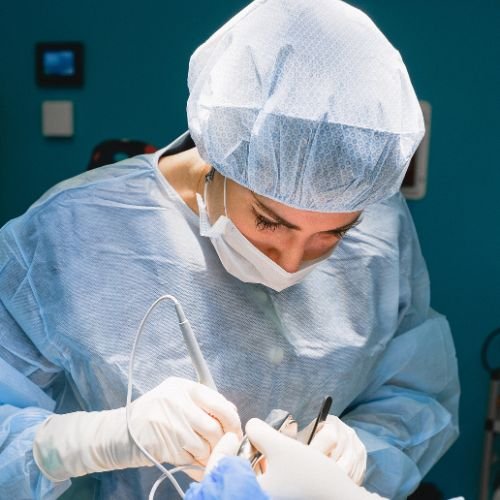The pilonidal cyst starts in the hair follicle. It forms and grows between the cleft of the buttocks. It is caused due to hair ingrowth. The first signs of occurrence are therefore seen in teenagers and young adults who are experiencing body changes along with a spurt of hair growth. The condition is worrisome if the cyst is infected. The painful and chronic cysts have pilonidal cyst excision as the only available treatment option.
How Common is Pilonidal Sinus in Teenagers and Young Adults?
Kids in their teen years and young adults till age 30 are at the highest risk of developing pilonidal sinus. The condition is typically more prevalent in males. This is because of their more hairy predisposition and harder skin texture. Men are almost 2.2 times more likely to develop the condition as against females.
What Contributes To The Development Of Pilonidal Sinus?
Technically, it’s the hair shaft that fails to puncture the skin. As it gets trapped within the hair follicle it paves way for the formation of the cyst. But there are several reasons that fuel this entire scenario thereby increasing the risk of developing the condition:
Amount Of Hair Growth – Some people have excessively hairy bodies. Their sacrococcygeal or the tailbone area is prone to having thick and coarse hairs.
Number Of Sitting Hours – Teenagers and young adults generally sit through the day. This is because of their busy work schedules or even a sedentary lifestyle. This exerts unending pressure on the tailbone and affects the natural and normal growth of the hair in the region.
Body Weight – Obese individuals are at a higher risk of developing the condition and subsequently requiring an excision of pilonidal cyst. This is because the excess body weight pushes the gluteal cleft deeper. The chances of hair and dead skin cells getting trapped increases.
Hygiene Flaw – Not observing proper hygiene strongly contributes to the development of the pilonidal cyst. As the area is prone to sweating, bacteria breeds quickly.
Wrong Fit Of Clothes – People who wear clothes that are too tight run a higher risk. Continuous friction due to clothes causes the hair shaft to break midway. The hair gets trapped within the follicle. As the condition worsens it will require pilonidal cyst excision surgery.
Can We Reduce The Risk Of Pilonidal Cyst?
Once present, the surgical excision of pilonidal cyst is not always avoidable. But certain lifestyle changes can prevent the condition from developing. Effective steps include:
Maintain Proper Hygiene – Keeping the area clean and dry is the key to avoid infection. Make sure you have a bath everyday day. Use soap and lukewarm water to cleanse the area between the buttocks. Do not forget to dry it properly with a clean towel. Always wear washed and sanitized undergarments.
Remove Hair – If the individual is prone to heavier hair growth, consider regular hair removal to keep the area hair free. As against regular waxing or shaving, a laser hair removal treatment has better and permanent results.
Weight Control – Make sure the body weight is within the healthy limits. This will keep the skin healthy and prevent skin sagging. This lowers the risk of developing pilonidal sinus.
Active Lifestyle – Following an active lifestyle not just helps in weight management, but also reduces pressure on the tailbone area due to excessive sitting.
Loose Fitted Clothes – To cut down to friction in the tailbone region, make sure you wear loose and comfortable clothes. Pants without adjustable elastics or tight fitting shirts make the movement difficult. Excessive pressure on the area causes the hair shaft to break. Wear comfortable clothes that take shape with every movement.
What Are The Treatment Methods Available For Pilonidal Cyst Removal?

Experiencing pain, redness, and swelling near the tailbone area? These are early signs of pilonidal sinus. It’s advisable to consult a colorectal surgeon for complete evaluation. After physical examination the doctor will confirm its presence. Depending upon the severity of the condition, a non-surgical or a surgical excision pilonidal cyst is recommended.
The non-surgical measures typically include topical management of the condition. It will include the preventive measures and case based management to cut open and drain away the cyst. This is generally preferred for small, acute and mild cysts.
If the symptoms are more aggressive, a more invasive treatment plan is suggested. The surgical removal of the cyst involves scraping off the entire cyst and the surrounding area. The area is sealed with sutures and requires several months until complete recovery.
Final Thoughts
The pilonidal cyst is particularly common in teenagers and young adults. Males due to their hairy skin type are at the highest risk. But the condition can be fairly managed and prevented by following preventive guidelines. It’s widely recommended that one consults an expert surgeon like Dr. Allen Kamrava MD MBA practicing in the Beverly Hills area. His expertise has helped several individuals minimize their risk of developing pilonidal cyst by adopting careful preventive strategies. His team is apt at performing pilonidal cyst excision in more complex and demanding cases.


